Zinc Prices: Evolution and Outlook
We discuss the factors that have shaped the price of zinc since 2020. Then, we'll provide our insights into potential future movements in this market.

This analysis reflects market conditions and information available at the time of publication (August 2023). It is provided for educational and historical context.
In this article, we'll discuss the factors and trends that have shaped the price of zinc since 2020. By the end of this discussion, we'll provide our insights into potential future movements in this market.
1. January 2020–May 2020: The Initial Decline During the Pandemic
In the first half of 2020, the zinc market underwent a substantial decline that breached a significant support level (indicated by a blue dotted line on the chart). This support area, initially established in 2015, was subsequently confirmed on several occasions before the pandemic period.
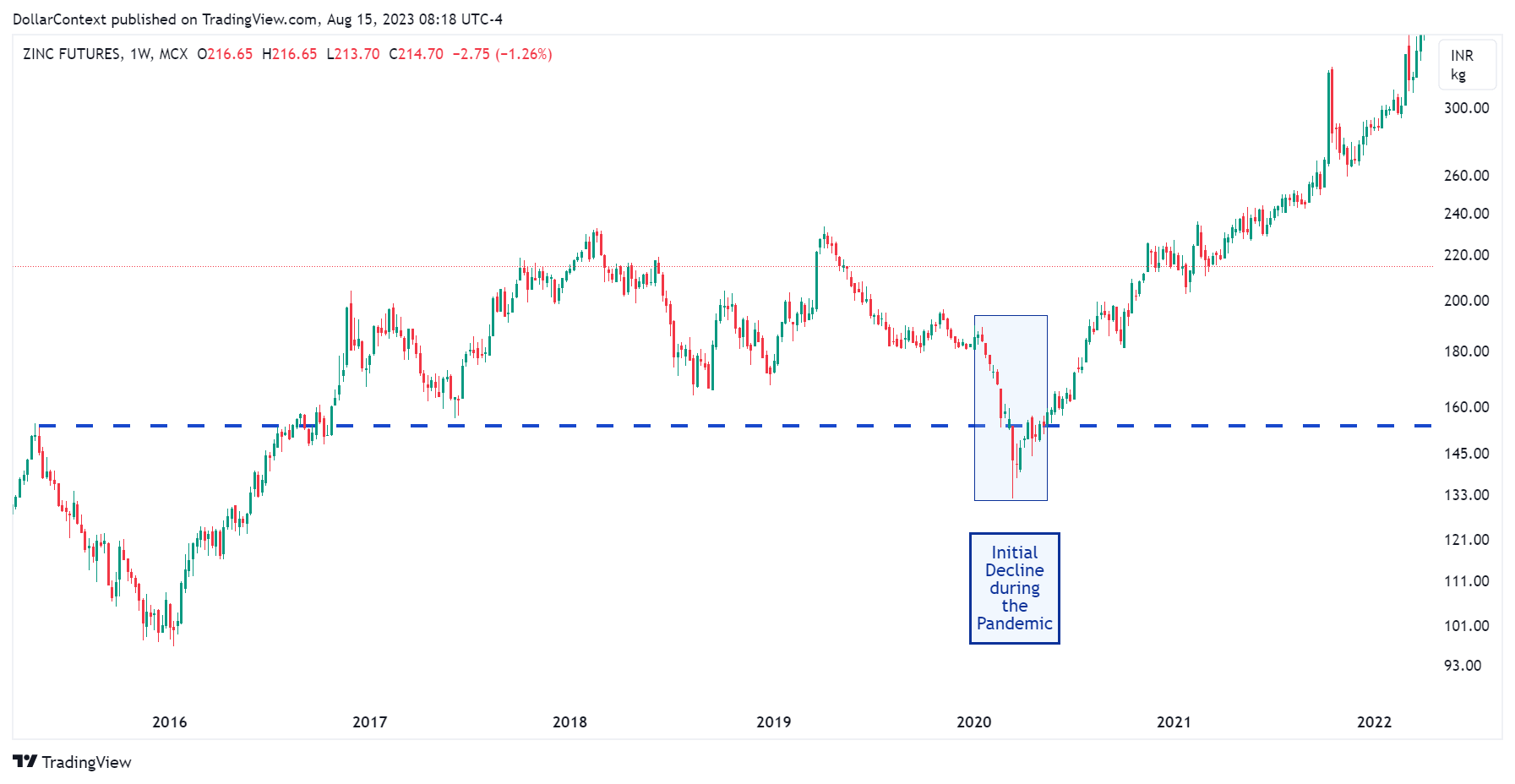
Within a matter of weeks, the market rebounded, climbing back above the resistance level. This price action can be described as a false breakout or spring. A number of factors played a role in the initial phase of negative sentiment and subsequent recovery.
- Economic Uncertainty: The unprecedented global health crisis led to disruptions in production, labor shortages, and a decrease in consumer demand.
- Dollar Volatility: The uncertain environment created significant fluctuations in currency values, which typically have a significant impact on base metal valuations, like zinc.
From a candlestick analysis perspective, a closer examination of the previous chart reveals that the lows of March 2020 were characterized by a session with a long lower shadow, followed by a doji.
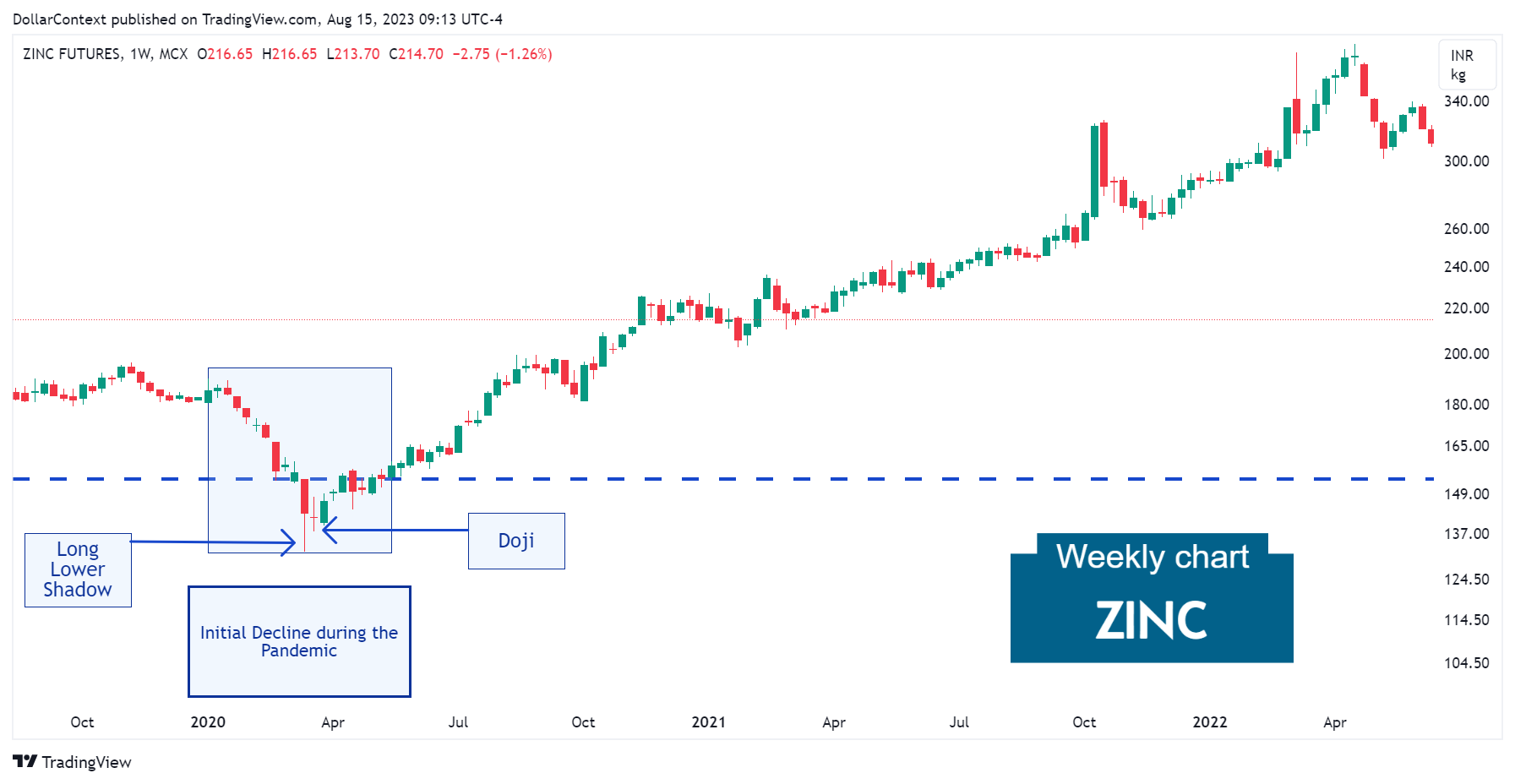
2. June 2020–April 2022: The Prominent Bullish Trend and the Subsequent Top
For about 22 months, the zinc market staged a notable upward trajectory, mainly motivated by these factors:
- Supply Chain Disruptions: The pandemic caused severe disruptions to global supply chains, affecting the production and distribution of various commodities, including zinc.
- Government Spending Programs: In response to the pandemic, governments globally implemented substantial economic stimulus measures. These actions, which involved an influx of liquidity and the establishment of low interest rates, served to invigorate stock markets. Additionally, they had intricate impacts on commodities like zinc.
- Dollar Depreciation: Throughout much of this time frame, the weakening of the dollar played a role in propelling commodity prices upward.
Observe that in October 2021, the zinc price exhibits a prominent dark cloud cover, indicating a potential risk to the bullish trend. The market, however, decisively challenged those highs with two upthrusts or false breakouts: initially, the price exhibited a long upper shadow, and a few sessions later, a doji appeared. Finally, a shooting star near the highs of the dark cloud cover validates the importance of this pattern, which emerged back in October 2021.
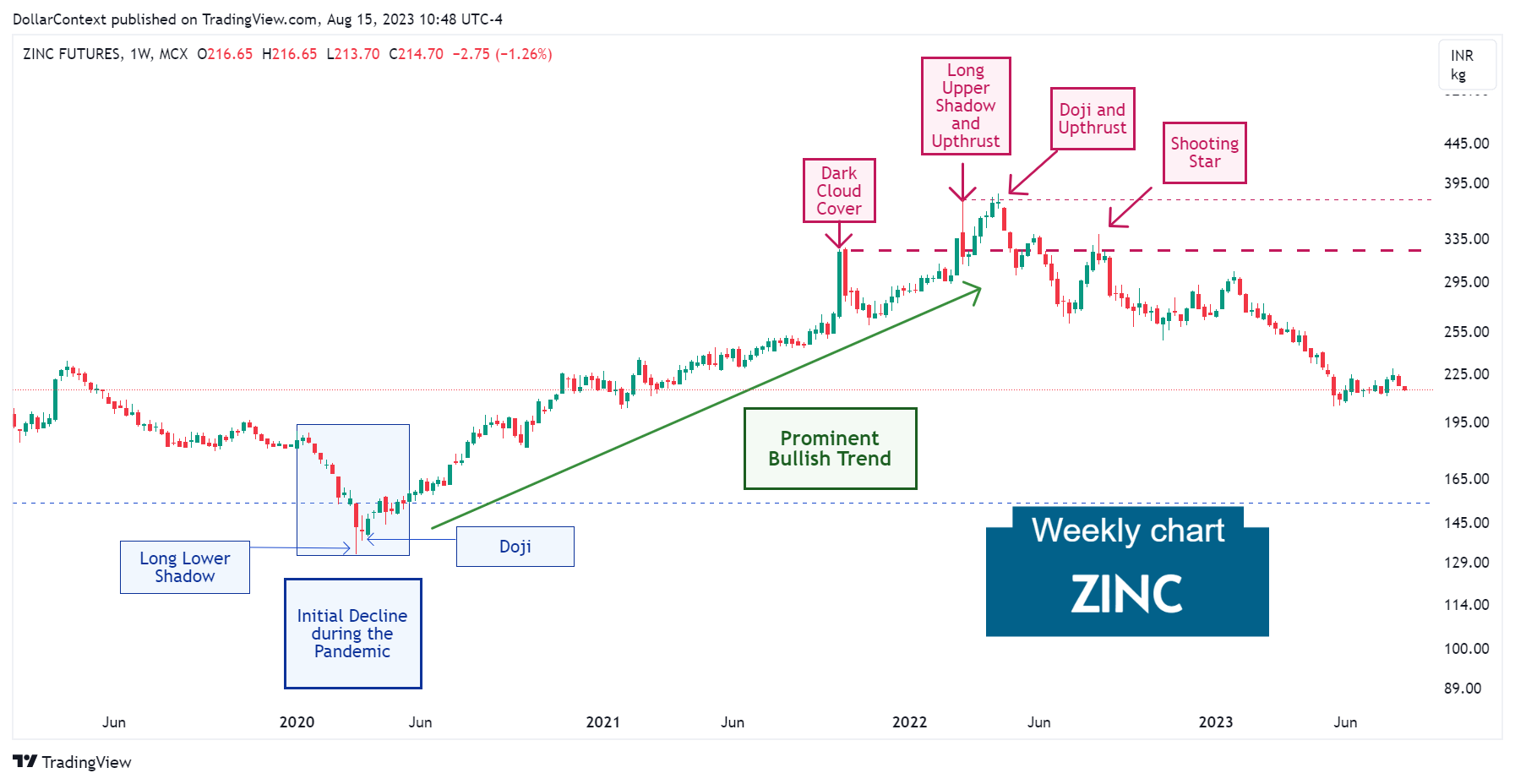
Interestingly, the combination of all candlestick bearish patterns described above can be viewed as a head and shoulders pattern, which is indicated on the chart below.
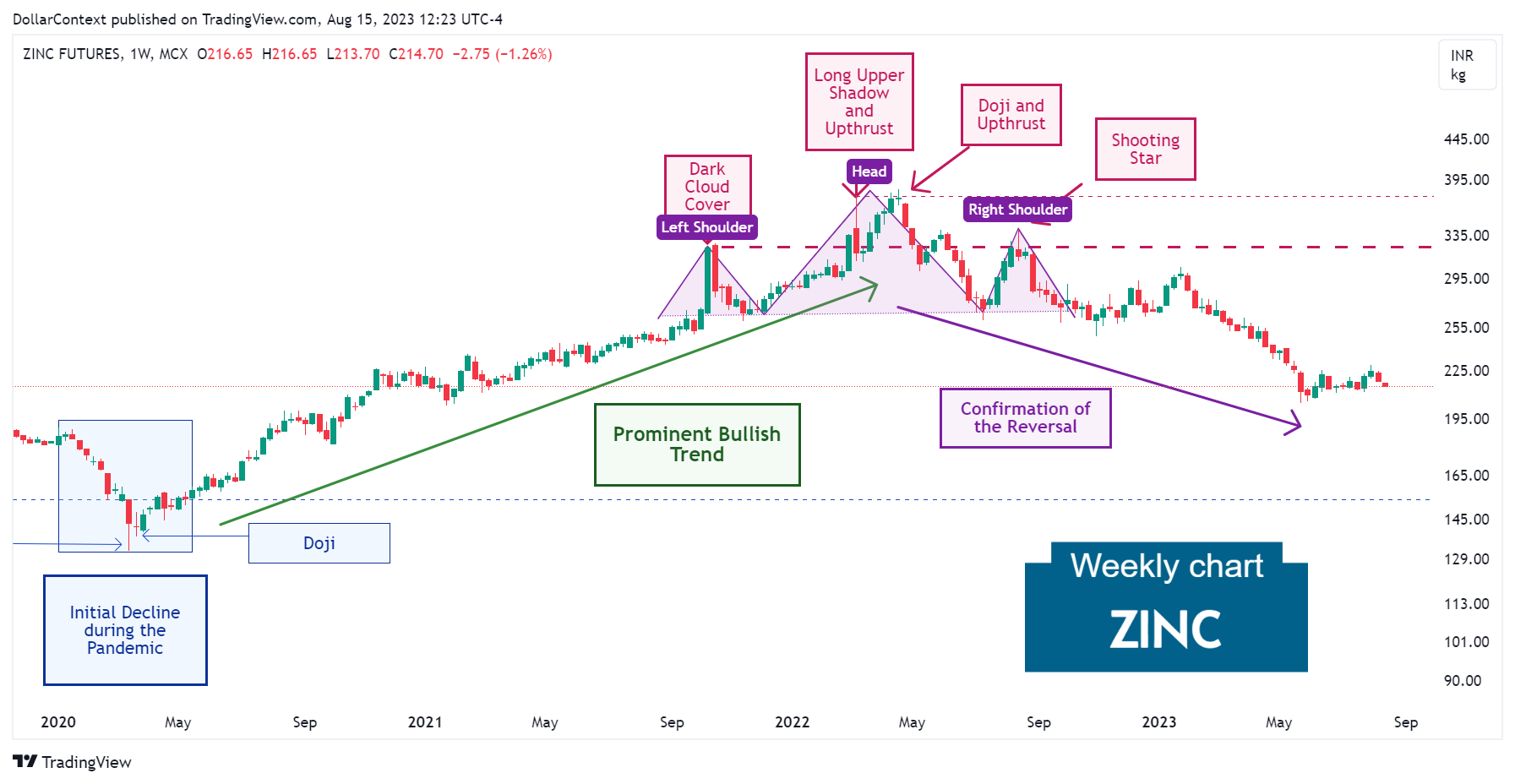
3. From May 2022 Onward: The Confirmation of the Reversal
After the bearish candlestick signals highlighted above, the zinc market has undergone a decline that is still ongoing today.
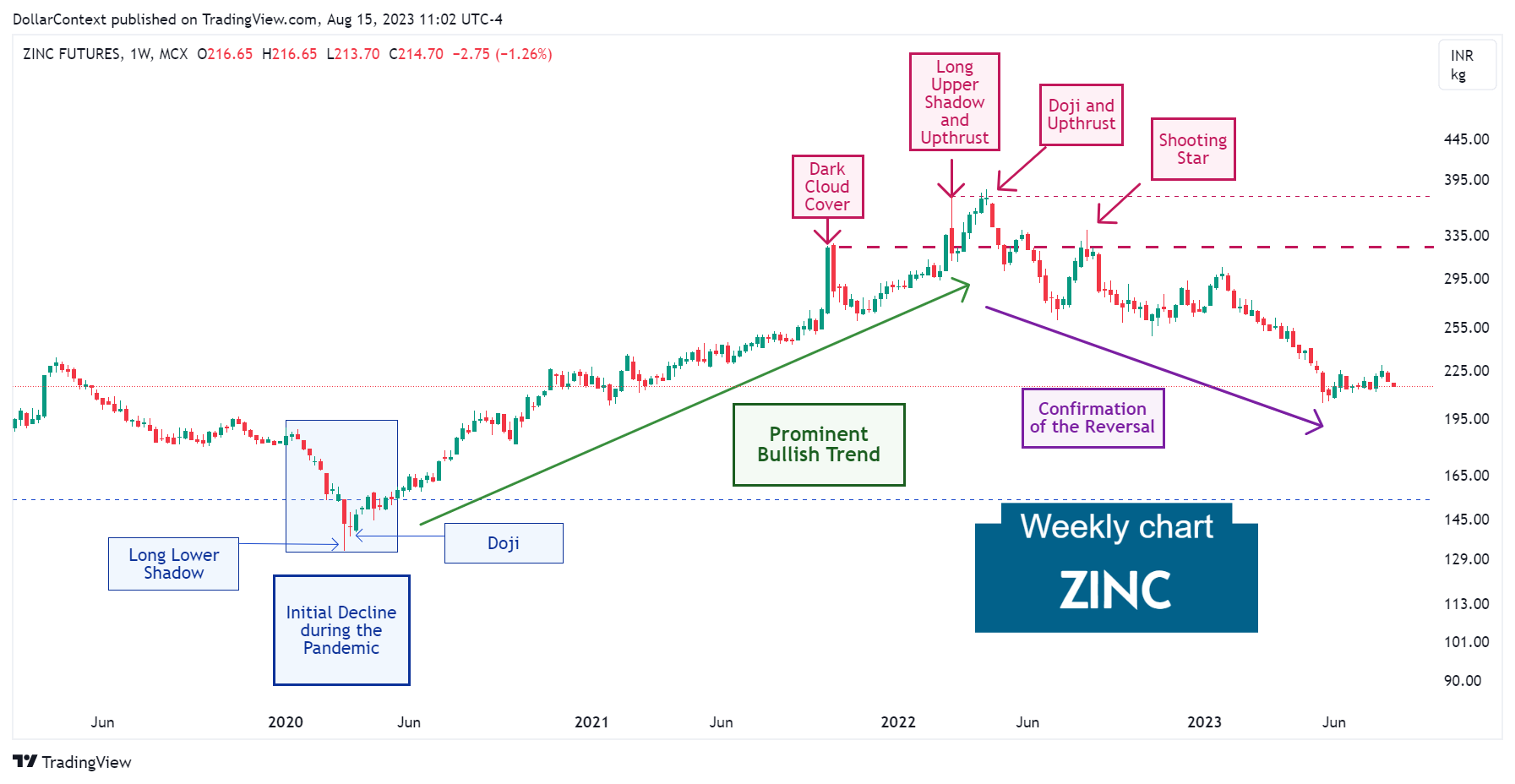
4. Outlook for Zinc in 2023 and 2024
The following perspective reflects expectations based on information and policy signals available at the time of writing.
In projecting the price trend of zinc for the upcoming two years, we believe it is essential to consider the following elements:
- The Supercycle Hypothesis: Starting from the 2016–2020 period, the commodity market may have entered into what is referred to as a supercycle. Such cycles generally extend for over eight years and are marked by substantial rises in global commodity prices. If this perspective holds true, zinc prices might be positioned for a sustained upward trajectory in the years ahead.
- The Economic Downturn Scenario: Given the Federal Reserve's assertive approach to raising interest rates, along with concerning signs from critical indicators like the inverted yield curve, the likelihood of an economic downturn around 2024 is growing. In the initial phases of a global recession, most commodities, zinc included, usually face downward pressure on prices.





